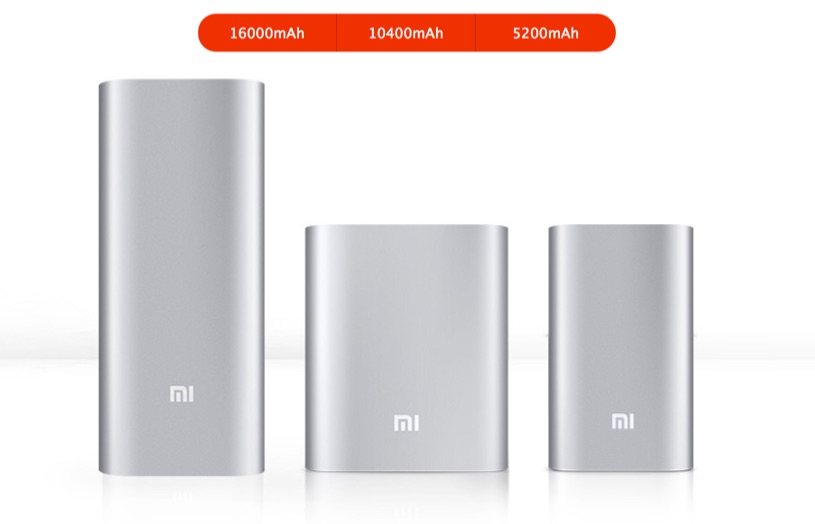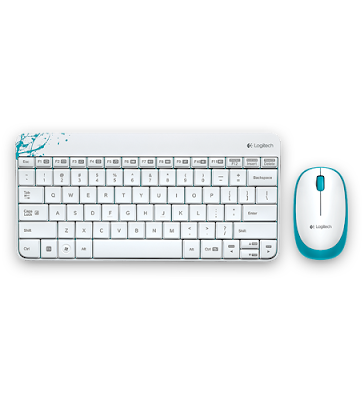 |
| XiaoMi's Power Bank Family |
With the increasing
number of non-removable batteries in flagships (even Samsung has moved away
from its trademark Galaxy trend, which is SD Card and removable battery), the option to buy a spare battery is no
longer a viable option. However, since we have to move forward with technology,
we have no choice but to accept and adapt ourselves to these changes. What should we do, then? Simple,
get power packs (or power banks, say a few people).
 |
| The Power Bank's Official Shot |
I've just got myself
this little guy. Manufactured by the increasingly popular Chinese brand Xiaomi,
this huge-but-compact power pack houses a total of 16,000mAh worth of juice
(although Xiaomi also offers smaller 5,000 and 10,400 choices as well) to extend
your gadget's life. It's quite affordable, it's compact, it's heavy, and it
looks quite sexy. So, should you buy this thing? Let's find out, shall we?
Packaging
and Design
 |
| Packaged neatly in a white box |
The packaging is
quite different compared to the brand's smartphones. If their smartphones are
housed in a brown box, the power pack is housed in a clean white box. Inside,
you'll find the power bank, along with a booklet and a short USB cable. Just
like other power packs out there, you don't get a power adapter. Well, I guess
those guys in the lab think that if you're smart enough to get a power bank,
you already have a smartphone and therefore, a wall adapter.
 |
| A ridiculously short USB cable is bundled with the power unit |
Anyway, let's move
on to the main unit. Looking at the specs sheet, the power pack has a dimension
of 145x60.4x22mm and weighs 350g. Unfortunately, I don't have a scale to prove
the weight. However, all I can say is that it's noticeably bulkier and heavier
than other power packs I've used before. That's good to hear actually, since
the first and simplest way to measure a battery's capacity is by holding it. A
8,000mAh battery is heavier than 5,000mAh and so on. If a 10,000mAh pack is as
heavy or even lighter than a 5,000mAh, you have every right to be suspicious.
 |
The power bank is as long as an ASUS
ZenFone2, but much heavier. |
 |
| It's way thicker than the ASUS ZenFone2 |
Its aluminum
enclosure looks neat and gives out exclusive and sophisticated look, actually,
along with the trademark 'mi' logo on the unit. All the ports and buttons (4 white LEDs indicating charge stored in the unit, a couple of USB ports for outgoing current and a single micro USB port for charging the device) are put on the top of the device. There's nothing on the sides, while the specs are printed on the bottom of the unit.
 |
| The top part of the device |
 |
| What you get in a nutshell |
Actual
Testing
The device is
advertised as having 16,000mAh capacity so in theory, it should be enough to
charge a handful of smartphones before screaming "Charge me!" and
that's what I did. Both ports are capable of outing 2.1A of currents. However,
when used simultaneously, only 3.6V of currents can be outed, which probably
means that one will out 2.1V while the other will out 1.5A. Oh, and it's worth
noting that the LEDs blink according to the capacity left as it is charging
other devices.
 |
| The unit's specs according to the packaging |
 |
| Unit specs written on the bottom of the unit |
That's what I did. I
connected two devices at once, a ZenFone2 and a Samsung Galaxy S4. One with the
included cable, and the other with another OEM cable. Without pressing any
buttons, both phones are charged as soon as they're connected. Please keep in mind
that this is the trait of the original XiaoMi power bank (there are fake units
all around the Internet). The power button only serves as resetting the charger
unit and checking the amount of power left in the device. While charging, fortunately, the unit doesn't emit excessive amount of heat, which is great.
 |
If you look closer at the screens, both phones were being charged
simultaneously |
Both devices were
charged from approximately ~20% of capacity, and with them being full, the unit
still has ~75% of power left (3 out of 4 LEDs were blinking when I checked). I
can't exactly point out the numbers, but you get the picture. With that much capacity,
I doubt you'll try looking for a power outlet ever again.
 |
When you see only one LED blinking, leave it be. It's going to take hours
to charge... |
Next is refilling.
XiaoMi doesn't bundle an AC adapter with the unit, but I'm pretty sure that you
have one already coming from your smartphone. With Samsung's 2.1A AC adapter,
it took approximately 7-8 hours to charge from empty to full. Please keep in mind
that I used a 2.1A adapter. It'll take longer than that to use an adapter with
lower current. My advice? Charge it when you're going to bed and I'm sure it'll
be full when you wake up… hopefully. Oh, and another advice: try not to charge
it from your computer. Not that it won't work, but it'll take forever to
charge. Trust me.
Conclusion:
One Hell of A Power Unit
Well, after
previously using numerous power banks, I have to admit that I like this one the
most. Usually, I'll go for design and compactness instead of capacity but this
power bank made me change my mind. Yeah sure, it's heavy and bulky, but it'll
give you enough juice to keep whatever your phone is for a day, or perhaps
more. Get one of these, and you will never worry again about your smartphone
running out of power.
Anyway, here's what
I find from this review:
Pros:
- Neat and sophisticated design
with premium materials
- Exceptionally massive
capacity
- High port current make
charging faster
Cons:
- Takes forever to charge
- Bundled USB cable is too
short for practical use
Well, I guess that's all for now, Folks. I hope you'll find this review useful. At the moment, I'm currently writing a piece to determine whether your XiaoMi power bank is genuine or not. I've already gathered information from various sources in the Internet, as well as comparing them with the unit I've just reviewed (thank God mine is genuine). It shouldn't be long until the article is up. So, until then, thanks for visiting and have a very nice day, everyone!














If you were to ask a smartphone owner what is the one thing they would like to see improved, more often than not, the answer would be the battery life. Charging a smartphone has become a daily chore.If you were to ask a smartphone owner what is the one thing they would like to see improved, more often than not, the answer would be the battery life. Charging a smartphone using Power bank has become a daily chore that you simply can’t avoid. To change that, we have recently seen the likes of the Gionee Marathon M5 and Lenovo Vibe P1 launch in India boasting massive batteries.
ReplyDeleteYes, I agree. Fortunately, it seems like more and more OEMs are using bigger batteries in their phones. If not bigger, then the fast-charging tech should help.
DeleteA Power Bank is nothing but a compact, portable battery charger. These devices can be used for charging a broad range of battery-run digital products from laptops to small handsets. You cannot take your USB chargers everywhere. Even if you take them, you may not get the proper place to plug them in. A power bank does not need external power all the times to recharge the sets. Power Bank 10000 mAh are good enough to get the phones recharged till you reach back home or office. Modern power banks use a set of USB chargers through which they can recharge more than one device at one time.
ReplyDelete